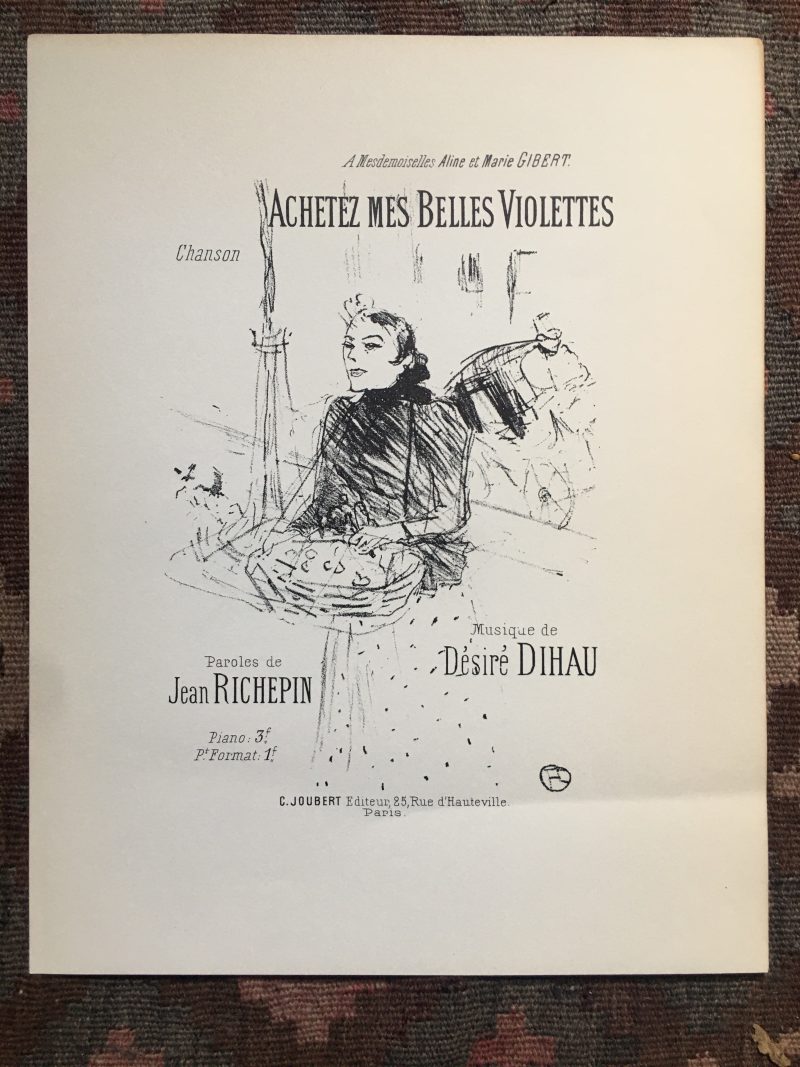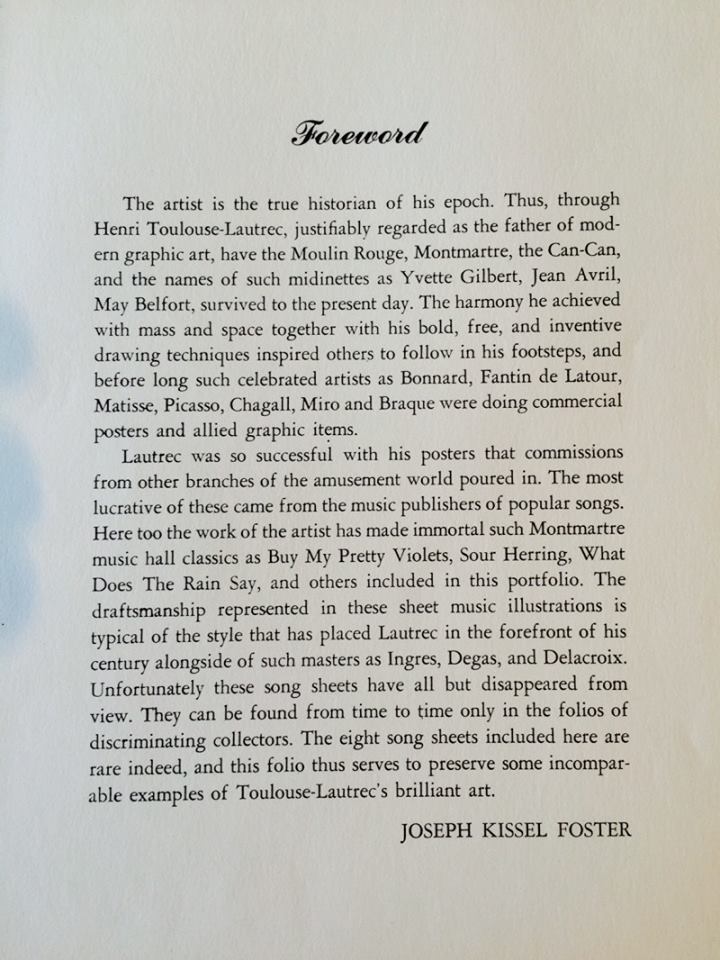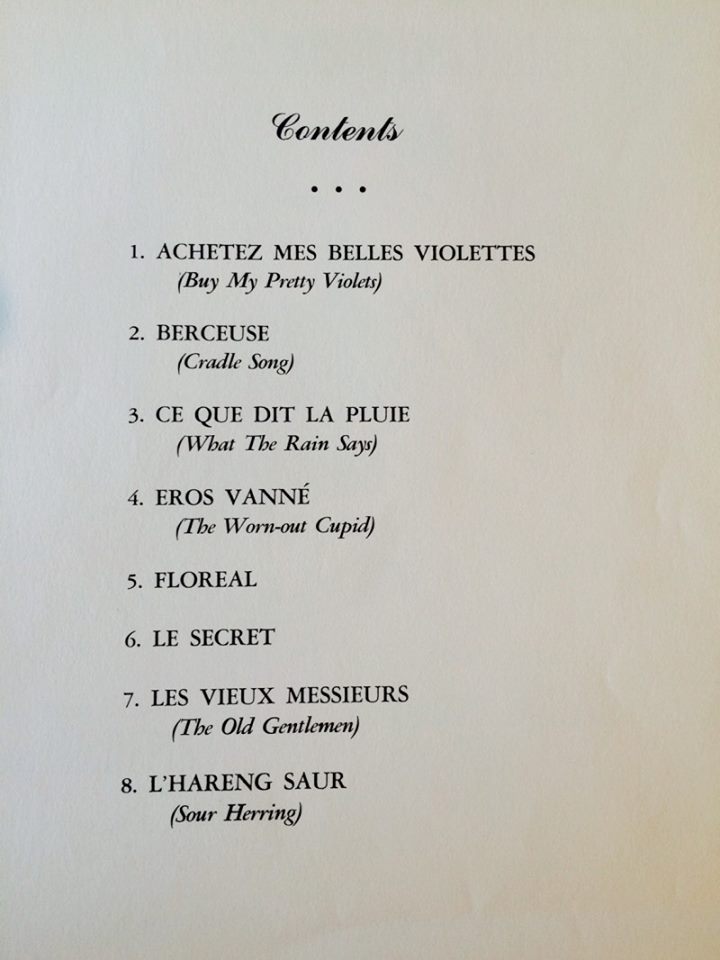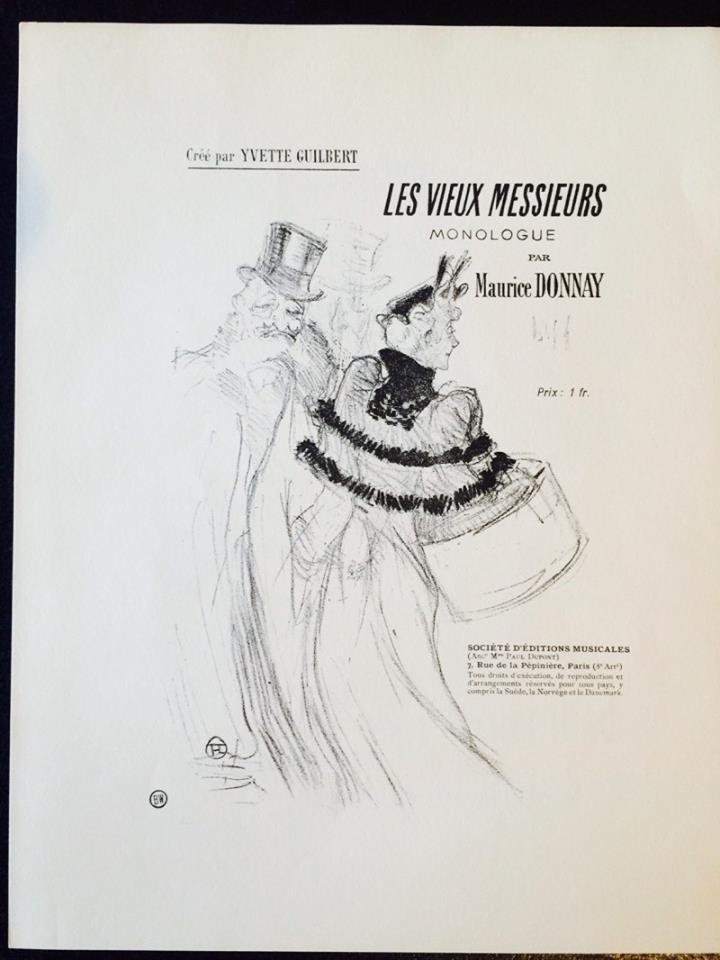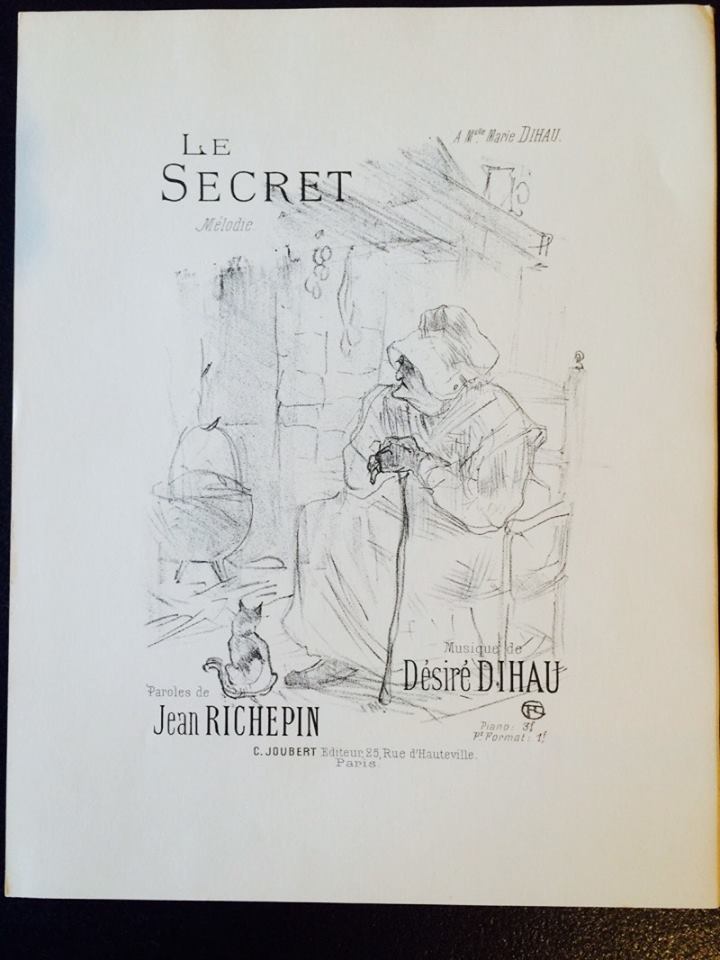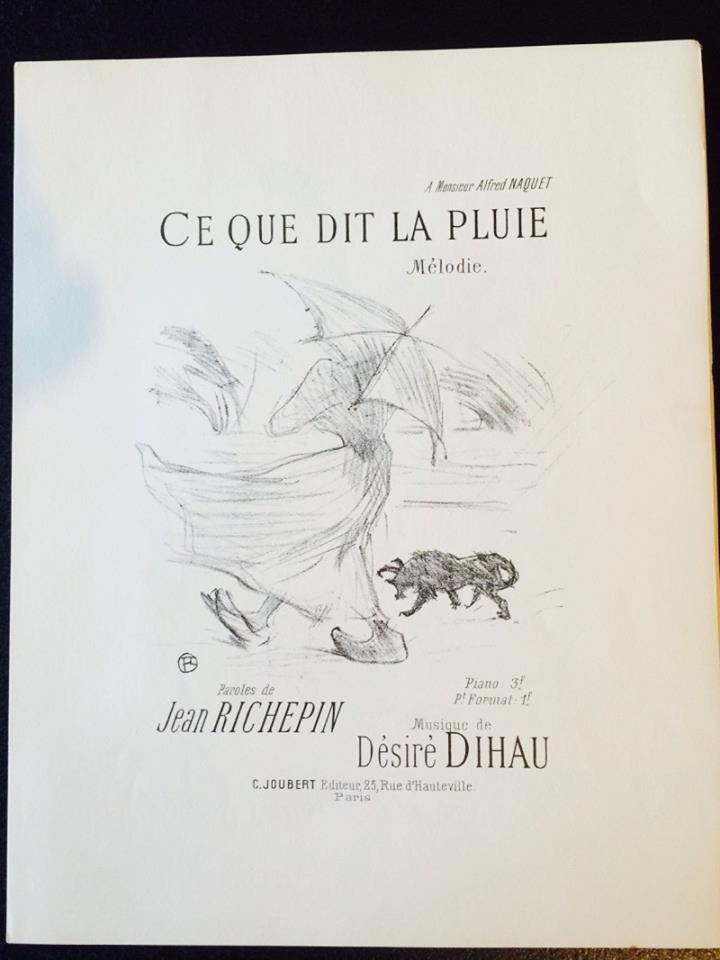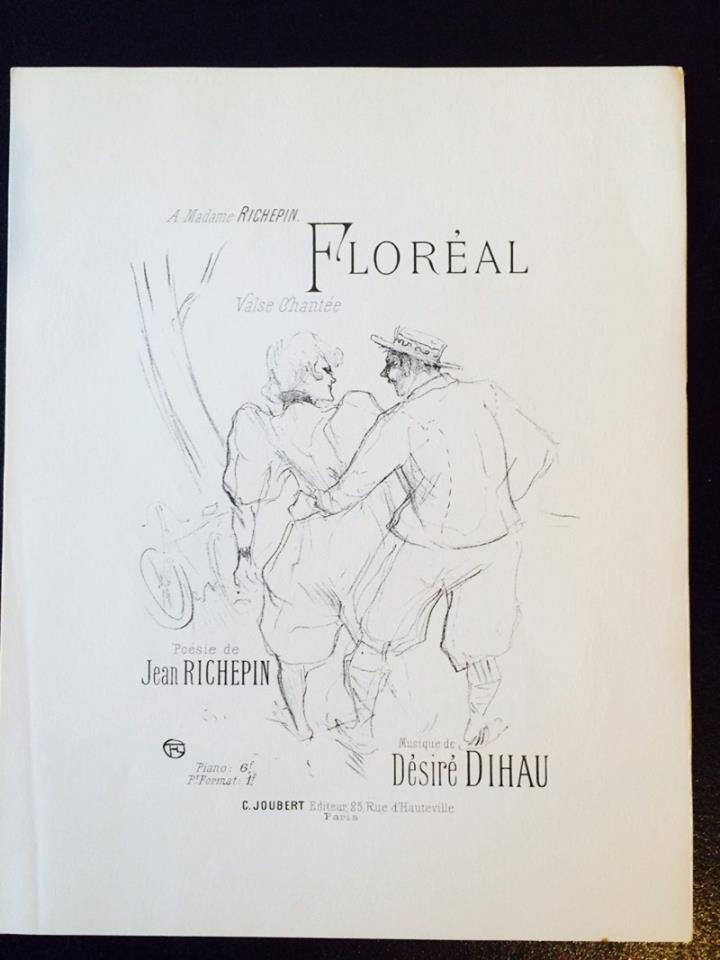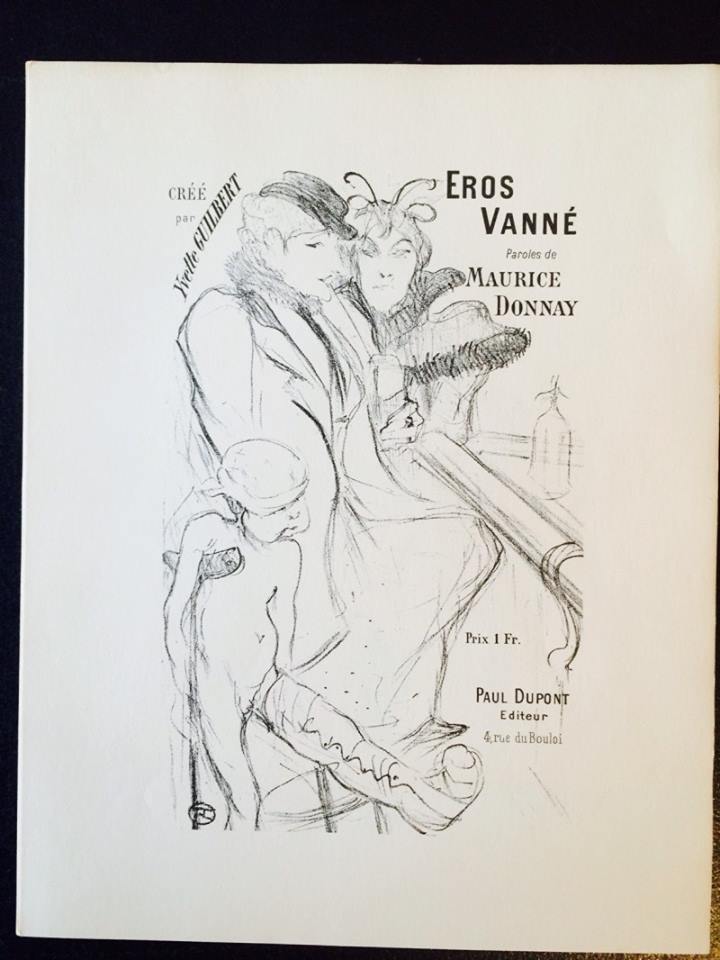Henri de Toulouse-Lautrec Prints 1952
Henri de Toulouse-Lautrec (24 Nov 1864 – 9 Sept 1901) was a French painter, printmaker, draughtsman and illustrator who emersively depicted the elegant and provacative culture of Paris in the late 1800’s.
‘Reproductions: Eight Rare Song Sheets by Toulouse-Lautrec’, New York, 1952. 14.5 x 11.5 inches each.
Foreword by Joseph Kissel Foster.
Published by New York, 1952
Text + 8 plates, printed in black & white facsimile from original lithographed song titles; plates and text loose as issued
Foreword by Joseph Kissel Foster; list of plates. Titled from cover.
Verbally appraised by Swann’s Auction, NYC, USA.
$300 for the set. VERY FRAGILE.
A preeminent artist of belle époque Paris, Henri de Toulouse-Lautrec (1864–1901) brought the language of the late-19th-century avant-garde to a broad public through his famous posters, prints, and illustrations for journals and magazines. A cultural nexus, he connected artists, performers, authors, intellectuals, and society figures of his day, creating a bridge between the brothels and society salons of the moment. His work allows entry into many facets of Parisian life, from politics to visual culture and the rise of popular entertainment in the form of cabarets and café-concerts. This exhibition, drawn almost exclusively from The Museum of Modern Art’s stellar collection of posters, lithographs, printed ephemera, and illustrated books, is the first MoMA exhibition in 30 years dedicated solely to Lautrec, and features over 100 examples of the best-known works created during the apex of his career.
Organized thematically, the exhibition explores five subjects that together create a portrait of Lautrec’s Paris. A section devoted to café-concerts and dance halls examines the rise of nightlife culture in France through the depiction of famous venues, including the celebrated Moulin Rouge. Another focuses on the actresses, singers, dancers, and performers who sparked the artist’s imagination and served as his muses, including Yvette Guilbert, acclaimed dancer Loie Fuller, and close friend Jane Avril. Lautrec’s sympathetic images of women are evident in a group of works that includes his landmark Elles portfolio, depicting prostitutes during nonworking hours, in quiet moments of introspection. Lautrec’s role in Paris’s artistic community is explored in a section devoted to his creative circle, highlighting designs for song sheets for the popular music that flooded Paris’s café-concerts, programs for the avant-garde theatrical productions that he attended, and his contributions to magazines and intellectual reviews. A final section looks at the pleasures of the capital, from horse racing at Longchamp and promenading on the Bois de Boulogne, to the new fad for ice skating and the enduring appeal of Paris’s culture of gastronomy.
